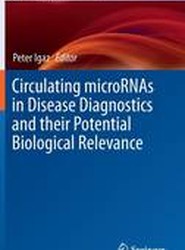(To see other currencies, click on price)
MORE ABOUT THIS BOOK
Main description:
Although DNA fingerprinting is a very young branch of molecular genetics, being barely six years old, its recent impact on science, law and politics has been dramatic. The application of DNA finger printing to forensic and legal medicine has guaranteed a high public profile for this technology, and indeed, scarcely a week goes by with out the press reporting yet another crime successfully solved by molec ular genetics. Less spectacularly, but equally importantly, DNA typing methods are steadily diffusing into an ever wider set of applications and research fields, ranging from medicine through to conservation biology. To date, two DNA fingerprinting workshops have been held in the UK, one in 1988 organised by Terry Burke at the University of Leicester, and the second in 1989 at the University of Nottingham, co-ordinated by David Parkin. In parallel with these workshops, which have provided an important focus for researchers, Bill Amos and Josephine Pemberton in Cambridge have established an informal newsletter "Fingerprint News" which is playing a major role as a forum for DNA fingerprinters. By 1989, it was clear that the field had broadened sufficiently to warrant a full international meeting. As a result, Gaudenz Dolf took on the task of organising the first, of what I hope will be many, International Symposium of DNA Fingerprinting held at Bern during Ist-3rd October 1990. The success of the meeting can be judged from the remarkable attendance, with 270 delegates from no less than 30 countries.
Contents:
Molecular Genetics of Hypervariable DNA.- Principles and recent advances in human DNA fingerprinting.- Generation of variability at VNTR loci in human DNA.- Human VNTR sequences in porcine HTF-islands.- Oligonucleotide fingerprinting using simple repeat motifs: a convenient, ubiquitously applicable method to detect hypervariability for multiple purposes.- DNA fingerprinting of the human intestinal parasite Giardia intestinalis with hypervariable minisatellite sequences.- Human variable number of tandem repeat probes as a source of polymorphic markers in experimental animals.- DNA Fingerprinting: the utilization of minisatellite probes to detect a somatic mutation in the Proteus syndrome.- Genetic variability of satellite sequence in the dipteran Musca domestica.- Population Genetics and Evolutionary Biology.- Analysis of population genetic structure by DNA fingerprinting.- Population genetics of hypervariable loci: analysis of PCR based VNTR polymorphism within a population.- Population genetic data determined for five different single locus minisatellite probes.- Multilocus and single locus minisatellite analysis in population biological studies.- Helpers-at-the-nest in European Bee-eaters (Merops apiaster): a genetic analysis.- Cloning, characterization and evolution of Indian peafowl Pavo christatus minisatellite loci.- Use of sex-linked minisatellite fragments to investigate genetic differentiation and migration of North American populations of the peregrine falcon (Falco peregrinus).- Economically-important Animals and Plants.- Hypervariable DNA markers and their applications in the chicken.- Cloning of hypervariable minisatellite and simple sequence microsatellite repeats for DNA fingerprinting of important aquacultural species of salmonids and tilapias.- Genetic factors accountable for line-specific DNA fingerprint bands in quail.- Identification of markers associated with quantitative trait loci in chickens by DNA fingerprinting.- Two dimensional DNA-fingerprinting in animals.- Applications of DNA fingerprinting in plant breeding.- Oligonucleotide fingerprinting in plants and fungi.- The isolation and characterisation of plant sequences homologous to human hypervariable minisatellites.- Implementation of DNA Typing.- DNA fingerprinting: a biotechnology in business.- DNA fingerprinting: its applications in forensic case work.- Tracking the violent criminal offender through DNA typing profiles - a national database system concept.- The quality control of cell banks using DNA fingerprinting.- Detection of amplified VNTR alleles by direct chemiluminescence: application to the genetic identification of biological samples in forensic cases.- Genetic typing using automated electrophoresis and fluorescence detection.
PRODUCT DETAILS
Publisher: Springer (Birkhauser Verlag AG)
Publication date: March, 2012
Pages: None
Weight: 715g
Availability: Available
Subcategories: Biochemistry
From the same series



































